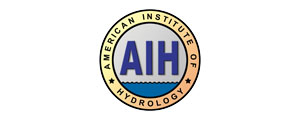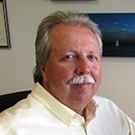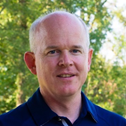- President’s Message
- Board of Registration Update
- Board of Examinations Update
- Spotlight on Recent AIH Exams
- Webinar Series: Forecast-Informed Reservoir Operations
- Spotlight on Recent AIH Elections
- The Rapid Evolution of Virtual Conferences
- Technical Content Features
- Modernizing Governance: Machine Learning at the California State Water Resources Control Board
- Testing for Nitrate and Pesticides in Minnesota Private Wells
- Including Uncertainty with Doppler-Radar Estimates
- 2020 AIH Awards
- In Memoriam: Hans Olaf Pfannkuch (1932 -2020)
President’s Message
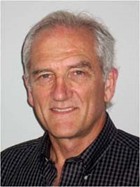
It has been a very busy year for the American Institute of Hydrology (AIH). Even with the difficulties brought on by COVID-19, the Institute has been able to continue to function and bring about improvements in its daily activities. During the spring and mid-summer, we were busy with making the transition to Smith Moore Associates (SMA), located in Sacramento, California, as the association manager for the Institute. The transition is now complete, and we hope that AIH members are beginning to see improvements in the communications with the Institute. We welcome constructive comments from members regarding suggestions on ways in which we might improve the functioning of the Institute’s daily activities.
The certification application process is now moving to be entirely online. There have been a few bugs to work out on this, but it seems that the process is (mostly) going well. SMA is going to continue to improve this process. The advantage of going online with the process is that we might then better avoid the issues experienced in the past with misplaced applications and/or reference letters. We do hope that the new system will help to reduce, or even eliminate, application frustration with the certification process. We would also like to improve the process of reviewing the certification examinations. For this, the Board of Registration (BOR) would ideally like to have at least one volunteer in each of the four specializations of hydrology (surface water, ground water, water quality, hydrologic technician). Laura Keefer, State Hydrologist with the Illinois Water Survey, was recently added to the BOR and welcomed back Joseph Eilers, hydrologic consultant with MaxDepth Aquatics (Mr. Eilers previously served AIH as volunteer on the BOR and Board of Examinations (BOE) from 2005 to 2008). But, AIH is reaching out to the membership to ask for a few more volunteers to consider serving on the BOR.
Exams have been online for a few cycles now and our experience has been that this works very well, so we will continue with it. With regard to the examinations, we are trying to increase member engagement in this part of the certification process. We would like to have members engaged on the BOE, and we have sent out requests asking members to volunteer to serve on the BOE. Another activity related to examinations is that the Institute will be issuing a Request for Proposals (RFP) for a contractor to update the exam question database and develop a set of materials (booklets, example exams, educational videos) that would be helpful to examinees in preparing for the exams. If interested in receiving the RFP, please send contact information to our management office.
During the last part of this year, the Institute partnered with the American Water Resources Association (AWRA) to provide a webinar series on Forecast-Informed Reservoir Operations (FIRO). Two of these webinars have been presented to date, and three more are planned for early 2021. More than 90 people attended each of the first two webinars. The Institute will continue to develop ideas for webinars that provide the AIH membership with valuable continuing education opportunities. Suggestions from our members are always welcome for webinar topics to pursue.
As of the writing of this letter, the Executive Committee would like to acknowledge the election of Julé Rizzardo as the President-Elect for AIH for 2021-2022. Julé has been serving as the Vice President (VP) for Institute Development for the past two years. Her term on that position is not up quite yet but, with moving into the President-Elect role, she will vacate the position beginning in January 2021 and the Institute is seeking to elect a member to the Executive Committee for the position. We encourage you to consider nominating yourself or another member for this important leadership position.
In addition to Julé’s election, we now have a new VP for Policy and Advocacy – a brand-new and exciting VP position on the Executive Committee. Rahul Ranade was nominated for the position and elected in a recent vote by the membership. Besides being a hydrologist, Rahul is a lawyer, and we hope this combination will be effective for developing and implementing actions to engage federal and state agencies on behalf of AIH.
With that, I want to wish all members the very best during the next few months. I will be completing my position as President on December 31, 2020 and will then be Past-President for the Institute. The current Past-President, Rao S. Govindaraju (GS), will be vacating that position on January 1, 2021. On behalf of the members of the Executive Committee, and all members of AIH, I want to thank GS for his dedicated service. Coming in as the new President will be Jamil Ibrahim. We look forward to the energy and leadership that Jamil and President-Elect Julé Rizzardo will bring to the Institute during 2021-2022.
Sincerely,
John L. Nieber, P.H., P.E., Ph.D.
AIH President, 2019-2020
Board of Registration Update
The Board of Registration (BOR) committee membership has been updated and currently consists of the following members listed in the table below. The BOR is responsible for reviewing applications for Professional Hydrologist, Hydrologist-In-Training, and all levels of Hydrologic Technician. Presently, the BOR has openings for application reviewers in surface water, groundwater, and water quality hydrology. If you are interested in volunteering, please reach out to our AIH management office.
Nick Textor | Chair |
Rahul Ranade | Surface Water Hydrology |
Mathew Young | Water Quality |
Joseph Eilers | new |
Laura Keefer | new |
Board of Examinations Update
An AIH Board of Examinations (BOE) was formed and currently consists of the people listed in the below table. The BOE is responsible for managing all AIH certification examinations, including: Part 1 – Fundamentals, Part II – Principles and Practices (for surface water, groundwater, and water quality specialty areas), and Hydrologic Technician (Level I, Level II, or Level III) examinations. The BOE is in the process of reviewing and updating the existing AIH examination database. We welcome additional members to volunteer to join in the BOE and offer your expertise! Additionally, as noted in the President’s Message, please reach out to our AIH management office if you are interested in receiving the upcoming Request for Proposals (RFP) for a contractor to update exams and develop exam preparation materials.
Zhong Zhang | Vice President for Academic Affairs |
David Williams | Surface Water |
Zhuping Sheng | Groundwater |
John Gray | Water Quality |
Kara Morris | Hydrologic Technician |
Spotlight on Recent AIH Exams
Congratulations to those who recently passed their exams during September and December 2020!
Hydrologist-in-Training – Fundamentals (Part I)
Meaghan Owens
Andrew Daus
Lauren Moore
Matthew Wilson
Meghan Arpino
Professional Hydrologist – Principles and Practices (Part II)
Matthew Burnette (surface water)
Megan Gehrke (water quality)
David Ho (surface water)
Dr. Ji Qi (surface water)
Bill Szafranski (surface water)
Webinar Series: Forecast-Informed Reservoir Operations
During October 2020, AIH, in collaboration with the American Water Resources Association (AWRA), kicked off a 5-part webinar series on Forecast-Informed Reservoir Operations (FIRO). This exciting partnership between AIH and AWRA features nationally acclaimed FIRO experts in the fields of hydrology, meteorology, and water resources engineering and provided background, perspectives, and applications of FIRO for water management.
There were over 100 live participants in Part 1 of the series, Overview and Introduction to FIRO Webinar Series, held October 14, 2020. Presenters for the series kickoff were:
Dr. F. Martin Ralph, Director, Center for Western Weather and Water Extremes (CW3E), University of California, San Diego (UCSD)/Scripps Institution of Oceanography
Jay Jasperse, Chief Engineer, Sonoma Water
Dr. Cary Talbot, Chief, Flood and Storm Protection Division/Coastal Hydraulics Laboratory, U.S. Army Corps of Engineers
|
|
|
F. Martin Ralph Director, Center for Western Weather and Water Extremes UC San Diego/Scripps Institution of Oceanography |
Jay Jasperse Chief Engineer Sonoma Water |
Cary Talbot Chief, Flood and Storm Protection Division/Coastal Hydraulics Laboratory US Army Corps of Engineers |
Part 2 of the series, Science Applications, was held November 18, 2020. Over 90 registrants participated live in the webinar. Presenters for Part 2 were:
Dr. Anna Wilson, Field Research Manager, CW3E, UCSD/Scripps Institution of Oceanography
Dr. Forest Cannon, Atmospheric Scientist, CW3E, UCSD/Scripps Institution of Oceanography
Chris Delaney, Senior Engineer, Sonoma Water
|
|
|
Anna Wilson Field Research Manager CW3E/ Scripps/ UCSD |
Forest Cannon Atmospheric Scientist CW3E/ Scripps/ UCSD |
Chris Delaney Sonoma Water Senior Engineer |
The third webinar in the series, Engineering Applications of a FIRO Program, will be held January 20, 2021. Part 4, National Applications & Transferability, and Part 5, International FIRO Applications & Potential Innovations, will be held during February and March 2021, respectively.
Be sure to register to participate in the webinars. Even if not available to participate in live sessions, encourage anyone interested to register so that you may access on demand recordings of the webinars. Remember, registration for these webinars is free to all AIH members. Participants also receive professional development hours that count towards continuing education for recertification.
Spotlight on Recent AIH Elections
As mentioned in the President’s message, congratulations to Julé Rizzardo on her election to the President-Elect position and to Rahul Ranade on his election to the Vice President for Policy and Advocacy position. Their professional biographies below provide some background on your newly elected AIH leaders.
President-Elect
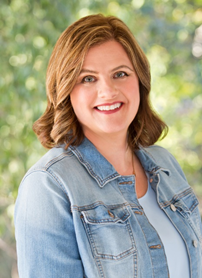
Julé Rizzardo is a Professional Hydrologist and Registered Civil Engineer with over 20 years of experience in water resources engineering and management. She has served as AIH’s Vice President for Institute Development since 2019. Julé is currently a Principal Engineer with the California State Water Resources Control Board (State Water Board), Division of Water Rights. As Chief of the Permitting and Enforcement Branch, she administers California’s complex system of water rights, considering water availability, senior water rights, and flows needed to protect public trust resources. Julé also has a decade of experience in the State Water Board’s Division of Financial Assistance, serving the drinking water and wastewater needs of small, disadvantaged communities throughout California. She received her B.S. in Civil Engineering from the University of California, Davis and her M.S. in Hydrogeology from the University of Nevada, Reno. She is committed to an integrated approach to hydrologic modeling, collaboration, and public engagement.
Vice President for Policy and Advocacy
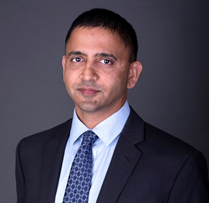
Rahul Ranade has been a member of AIH since 2010 and a certified Professional Hydrologist since 2012. Over this time, he has worked as a hydrologist with a focus on surface water and flood management with consulting firms in the US and Canada. He has volunteered in various roles with AIH since 2014, including serving as Vice President for Communications (2016-2019) and currently serving on the Board of Registration. Rahul has a M.S. in Water Resources from Georgia Tech and a J.D. from McGeorge School of Law. Presently, he primarily practices as a lawyer in Vancouver, British Columbia (Canada) but continues to use his expertise as a Professional Hydrologist by advising local governments on flood management policy in British Columbia and the state of Washington.
The Rapid Evolution of Virtual Conferences
Not only has the pandemic brought about a new era of telework, but the entire technical conference industry has transformed – into a virtual one. In-person presentations have been replaced with video-conference presentations and a mix of pre-recorded and live video content. Personal handshakes and hallway chats have been replaced with emoji applause and video chat lounges. Exhibit booths have been transformed into miniature websites, chock full of digital information, videos, and live chat options. The American Institute of Hydrology has been fortunate to participate in two virtual conferences this year.
2020 Groundwater Resources Association Virtual Conference
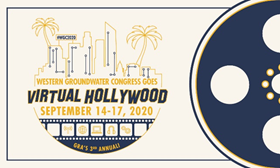
AIH participated in its first virtual conference with a virtual booth at the Groundwater Resources Association (GRA) “Virtual Hollywood” conference September 14-17, 2020. What keeps conference goers engaged to visit exhibitor booths at a virtual conference? Lots of fun activities throughout the day, including virtual karaoke and daily wellness activities. GRA did a fantastic job of offering creative and fun activities such as this throughout the conference. The AIH virtual booth included a prerecorded video and introduction to our Executive Team members, as well as a wide variety of information on AIH membership and resources. In all, 25 people attended the virtual booth, and the Membership Guide was the most frequently visited link. AIH would like to thank GRA for the opportunity to participate with a virtual booth and learn some great tips on how to engage people in a virtual conference.
American Water Resources Association 2020 Virtual Annual Water Resources Conference
With one virtual booth under our belt, the team prepared for a second one. The 2020 American Water Resources Association (AWRA) 2020 Virtual Annual Water Resources Conference was held November 9 – 11, 2020. Despite going virtual due to the ongoing COVID crisis, the conference had over 250 attendees and provided great opportunities for branding AIH and promoting certification for hydrologists and hydrologic technicians. As a Platinum-level sponsor for the conference, AIH provided a brief presentation during the Opening Plenary for the conference, hosted a virtual exhibit booth and two engagement breaks, and provided a presentation and announced AIH’s 2020 awardees during AWRA’s Annual Awards Luncheon. Preparation for the conference started weeks before the actual event, with many members of our Executive Committee preparing and volunteering to staff the virtual booth.
Vice President for Institute Development, Julé Rizzardo (California State Water Resources Control Board) and President-Elect, Jamil Ibrahim (Stantec) participated in the conference on behalf of the AIH leadership team. Additionally, AIH’s Treasurer, Salam Murtada (Minnesota Department of Natural Resources), Vice President for Communications, Brennon Schaefer (Minnesota Department of Agriculture), Vice President for International Affairs, Yige Gao (Department of Water Resources, Gwinnett County Government) hosted AIH’s virtual exhibit booth during the conference.
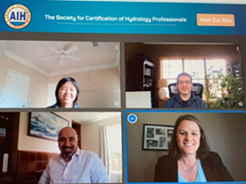
Jamil provided a presentation at the Opening Plenary Session to introduce attendees to AIH and provide a brief background on the commonalities between AIH and AWRA. Jamil also provided a presentation and participated in a panel discussion for a technical session titled Advance Your Career by Leveraging Association Membership and Certification Credentials –Strategies for Water Professionals throughout their Career. For the session, Jamil provided a presentation on “Leveraging Certification Credentials and Professional Hydrologist (PH) and Hydrologic Technician (HT) Certification.” Julé and Jamil also hosted two engagement breaks during the conference: (1) Challenges of Working During the COVID-19 Pandemic, and (2) Why Certification for Hydrologists?
On the last day of the conference, Julé announced and honored AIH’s 2020 awardees during the AWRA Annual Awards Luncheon:
Dr. David Ford – Ray K. Linsley Award for Surface Water
Mohamed M. Hantush (U.S. Environmental Protection Agency) – Robert G. Wetzel Award for Water Quality
Greg Bevenger, P.H, (WyoHydro) – AIH Founders Award
For more information related to the awardees, please see the subsequent section in this Bulletin “2020 AIH Award Winners”.
One benefit of the virtual awards ceremony was the ability for awardees to have their friends and family attend the event from around the world, which would not otherwise have been possible. Unfortunately, Dr. Ford was unable to attend due to required treatment for medical conditions, so Julé provided written remarks from David.
AIH is sad to note that David recently passed away due to complications related to leukemia. We are grateful to David for his contributions to the field of hydrology and very happy we were able to acknowledge and celebrate his achievements.
Finally, we had two winners of our Amazon gift card social media giveaway contest – Christina Morrisett and Amanda Nelson.
AIH’s partnership with AWRA is strong, and both organizations recognize the value of organizational collaboration. Discussions are underway for AIH and AWRA to cohost a technical conference in 2022. Stay tuned!
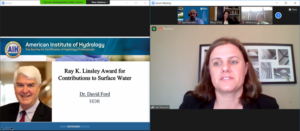
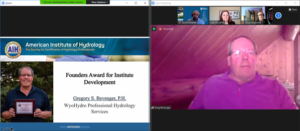
Future Engagement
Virtual conference participation is not the networking experience any of us imagined when 2020 began. But with great challenges come great opportunities for creativity and engagement. We have been able to increase our reach across a more diverse group, making information more accessible to people worldwide. Students and professionals that otherwise would not have been able to travel to an in-person conference were able to get information on professional certification, career counseling, and jobs that is so critical to success, now more than ever. There is talk in the industry about the value of continuing to offer a hybrid model of virtual and in-person conferences as a long-term strategy. The silver lining of this situation is shining a very bright future upon us, and our ability to expand the reach of AIH and make new lifelong connections.
Technical Content Features
Modernizing Governance: Machine Learning at the California State Water Resources Control Board
Andrew D. Hill, Kason V. Grady, Brent V. Vanderburgh, Lance Le, Julé A. Rizzardo.
The California State Water Resources Control Board and Regional Water Quality Control Boards (Water Boards) are tasked with managing water allocation and protecting water quality over a vast geographic area consisting of over 200,000 miles of rivers, 1.6 million acres of lakes, and over 8 million acres of harvested agricultural land. There is an urgent need for resilient and innovative approaches, as California continues to be challenged with managing extreme droughts and floods, declining fishery resources, and sustaining a population of 45 million by the year 20501. Society, the economy, and governing bodies have shifted to “big data” as engines of progress and innovation. Underlying this shift were the simultaneous increasing capabilities and decreasing costs of data collection, storage, and computation2. Driving the shift is artificial intelligence (AI) and within this highly interdisciplinary field is machine learning (ML), which comprises the family of algorithms that improve through experience. ML is essential to our effectiveness in managing water supply and water quality, including 40,000 entities who divert and use water across the state.
OPPORTUNITIES FOR MACHINE LEARNING AT THE WATER BOARDS
The opportunities to improve the Water Boards’ business practices through ML methods are numerous and varied. Examples include predictive models that help estimate river flow, forecast drought onset, or identify water quality problems; Natural Language Processing (NLP) models that can understand human language using chatbots or mining text; and automated identification models to identify harmful algal blooms, or identify unpermitted cannabis cultivation sites. Many of these approaches became computationally realistic in the past few years; their application in the world of water management is showing incredible promise for protecting natural resources for the benefit of all. Fortunately, many of these approaches have been published with open licenses for use and distribution.
Given the scale and magnitude of its responsibilities, the Water Boards are often charged with prioritizing the largest or most pressing issues for immediate action. In these instances where workload and responsibilities dwarf available resources, ML can drastically improve efficiency by reducing a tremendous amount of unstructured data, like satellite images, into a small amount of highly structured information, like shapefiles. These solutions present an opportunity to reshape our understanding of data-driven governance by updating legacy business practices.
With any relatively young technology, challenges arise when first incorporating it into new business practices or methods. There have been many examples in the press of how Google, Tesla, or other high-profile businesses have built biased models or used those models in unethical ways3. In response, there is a growing body of literature clarifying ethical concerns as pertains to privacy, manipulation, opacity, and bias4. It is imperative that any application of ML technology to improve governance be informed by the associated risks and contain safeguards and oversight to ensure the public’s trust. It is with this awareness and responsibility in mind that the Water Boards coined its first full-scale implementation of ML as CannaVision.
CANNAVISION ASSISTS IN IDENTIFICATION OF IMPACTS
CannaVision is an automated identification tool designed to locate cannabis cultivation sites in any given area using publicly available aerial and satellite imagery. One of this project’s goals was to identify the scope of the well-established and previously illegal cannabis cultivation industry so that the Water Boards could more holistically approach their new responsibilities according to Prop 64, which legalized cannabis cultivation in the State and contained multi-agency requirements for the regulation of this industry5.
In order to fully grasp the potential of this new technology to reshape the Water Boards’ approaches, it is important to understand that the scale and the dispersed nature of the industry’s operations dwarfed the available resources of the Water Boards to ensure that appropriate water management practices are followed. Cannabis irrigation is a regulated activity and frequently comes from streams, either directly withdrawn and stored, or is pumped through wells that hydrologically connect with streams6. Peak water withdrawal coinciding with periods of low streamflow present a significant threat to ecological systems and downstream water rights holders. In addition to placing increased demand on water resources, there are various threats to water quality from cannabis cultivation sites, including sediment from site development on rural sites, disturbance within riparian areas and both legal and illegal agricultural chemicals are frequently found in conjunction with these sites and have been found in numerous streams7. CannaVision is a solution to a broad scale problem such that a few staff with the appropriate statewide imagery, can more efficiently prioritize activities throughout the state.
The imagery datasets used by CannaVision are in the public domain and state governance using these datasets for manual identification of regulated activities has been a long-standing practice. CannaVision was designed such that the only aspect of the regulatory process that will be automated is the manual imagery analysis. Therefore, CannaVision is a monitored application of ML that still requires appropriate staff oversight, verification and validation.
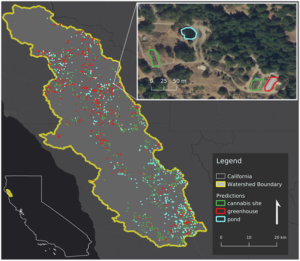
Title: Automated identification of cannabis infrastructure in the South Fork Eel River watershed.
Caption: Cannabis cultivation is a well-established and widespread activity throughout California. The adjacent map (main) shows automated CannaVision predictions in the South Fork Eel River watershed and the inset (top right) shows an example of predictions at a fine scale. Predictions include 1146 active and potentially active outdoor cultivation sites, 1094 greenhouses, and 459 ponds from 2018.
CannaVision outputs geospatial data of cannabis cultivation sites and infrastructure given georeferenced imagery. Historically, the Water Boards, as well as other agencies have manually mapped cannabis cultivation sites from aerial or satellite imagery of only a subset of the state to produce Geographic Information Systems (GIS) maps of grow site locations8, prone to interpretation errors and un-reproducible results. With the CannaVision application in place, the Water Boards can efficiently and accurately prioritize regions based on a complete statewide analysis for specialized attention and outreach at a fraction of the cost of manual imagery searching.
Direct human oversight of ML is important in the government context to maintain public trust. A seemingly innocent model architecture may result in biased predictions, whether it be racial, socio-economical, or biased in other ways. The Water Boards look towards integrating these models with a “human-in-the-loop” implementation9. It is essential to build in human oversight to insulate ML applications and ensure data integrity, even though it adds additional cost and time.
FUTURE APPLICATIONS OF MACHINE LEARNING
The Water Boards’ use of ML focuses on identifying the scale and scope of cannabis cultivation, but the technology is equally promising to estimate flow, predict temperature and drought, identify trash before entering waterways10, detect unauthorized reservoirs, detect fraudulent financial transactions, and analyze large volumes of text. While these various ML approaches are clearly powerful, they are not replacements for direct staff engagement in outreach, compliance assistance, and field work. It will take time and significant consideration to responsibly integrate ML into existing business processes.
Along with implementing these innovative tools to produce new information comes great responsibility to ensure our practices are open, transparent, and coordinated across the state with other ML and AI initiatives. Water Boards staff are excited to be leveraging state of the art technology and look forward to the opportunity to advance the Water Boards’ effectiveness and inspire others through innovation and collaboration.
Disclaimer: The views expressed by the authors are theirs alone and do not necessarily represent the views or the official policy or position of the California Environmental Protection Agency, the Water Boards or the State of California.
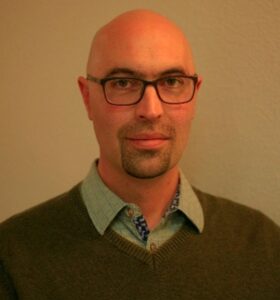
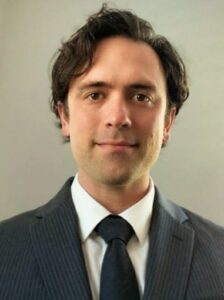



1 California Dept. Water Res. (2020). California Water Resilience Portfolio: Governor’s Executive Order N-10-19. <https://waterresilience.ca.gov/wp-content/uploads/2020/07/Final_California-Water-Resilience-Portfolio-2020_ADA3_v2_ay11-opt.pdf>
2 Manyika, J., Chui, M., Brown, B., Bughin, J., Dobbs, R., Roxburgh, C., & Byers, A. H. (2011). Big data: The next frontier for innovation, competition, and productivity. San Francisco, CA: Insights & Publications, McKinsey & Company
3 Sweeney, L. (2013). Discrimination in online ad delivery. Queue, 11(3), 10-29.
4 Barocas, S., & Selbst, A. D. (2016). Big data’s disparate impact. California Law Review, 104, 671
5 California Courts. (2015). Proposition 64: The Adult Use of Marijuana Act <http://www.courts.ca.gov/prop64.htm>
6 Dillis, C., McIntee, C., Butsic, V., Le, L., Grady, K., & Grantham, T. (2020). Water storage and irrigation practices for cannabis drive seasonal patterns of water extraction and use in Northern California. Journal of Environmental Management, 272, 110955.
7 Butsic, V., Carah, J. K., Baumann, M., Stephens, C., & Brenner, J. C. (2018). The emergence of cannabis agriculture frontiers as environmental threats. Environmental Research Letters, 13(12), 124017.
8 Butsic, V., Schwab, B., Baumann, M., & Brenner, J. C. (2017). Inside the Emerald Triangle: Modeling the placement and size of cannabis production in Humboldt County, CA USA. Ecological Economics, 142, 70-80.
9 Amershi, S., Cakmak, M., Knox, W. B., & Kulesza, T. (2014). Power to the People: The Role of Humans in Interactive Machine Learning. AI Magazine, 35(4), 105-120.
10 As it relates to the CA State Water Board’s 2015 Trash Provisions of the Water Quality Control Plan for Inland Surface Waters, Enclosed Bays, and Estuaries of California https://www.waterboards.ca.gov/water_issues/programs/trash_control/docs/01_final_sed.pdf
Testing for Nitrate and Pesticides in Minnesota Private Wells
![]()

Kim Kaiser – Hydrologist, Minnesota Department of Agriculture
Brennon Schaefer – Hydrologist, Minnesota Department of Agriculture
In 2015, the Minnesota Department of Agriculture (MDA) updated the Minnesota Nitrogen Fertilizer Management Plan (NFMP). The NFMP is Minnesota’s blueprint for addressing nitrate-nitrogen (nitrate) from nitrogen fertilizer in groundwater, and it called for an assessment of nitrate at the township scale. As the NFMP was being developed, the MDA began assessing nitrate concentrations in private drinking water wells through the Township Testing Program (TTP). The TTP began with a spatial analysis that identified townships throughout the state that were vulnerable to groundwater contamination (at least 30% of a township) and had significant row crop production (at least 20% of a township), as shown in Map 1.
All well owners in the identified townships were offered testing in two steps: the “initial” sampling and the “follow-up” sampling. In the initial sampling, all township homeowners using private wells were sent a nitrate test kit in the mail. The homeowner collected the sample and returned it to a selected testing laboratory by mail. If nitrate was detected in their initial sample, the homeowner was offered a well site visit by a trained hydrologist for a follow-up nitrate and pesticide sample the following year as part of the Private Well Pesticide Sampling (PWPS) Project.
Map 1. Map of Minnesota with vulnerable groundwater and significant row crop agriculture.
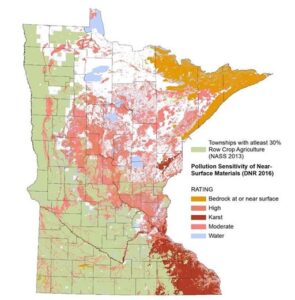
TTP Nitrate Assessment
From 2013-2019, more than 90,000 private well owners were offered nitrate testing as part of the TTP. More than 30,000 private well owners, in 344 vulnerable townships from 50 counties, participated in nitrate testing (Map 2). In the 344 townships initially tested, 143 (41%) had 10% or more of the wells with a nitrate concentration over the Minnesota Health Risk Limit (HRL), which is 10 mg/L (Figure 1). In contrast, 133 townships had less than 5% of the wells over the HRL. Overall, 9.1% of the 32,217 wells sampled exceeded the HRL for nitrate (Table 1).
Figure 1. Figure of initial number and percent of townships in each nitrate criteria.
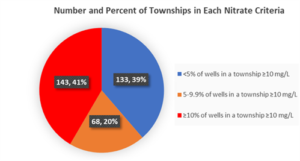
Table 1. Initial Township Testing Program well results for nitrate from 2013-2019.
Total Wells | <3 mg/L* (Number of Wells) | 3≥ c <10 mg/L* (Number of Wells) | ≥10 mg/L* (Number of Wells) | ≥10 mg/L* (Percent) |
32,217 | 24,791 | 4,501 | 2,925 | 9.1% |
*milligrams/Liter (mg/L) is equivalent to parts per million (ppm)
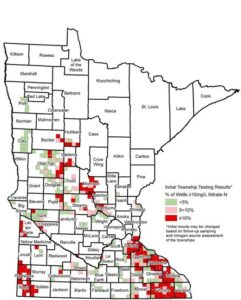
Map 2. Map of initial township testing results.
PWPS Project Pesticide Assessment
Since 2014, pesticide testing has been offered to more than 13,000 private well owners through the follow-up sampling effort. Approximately 5,800 wells, in 291 townships from 42 counties, have been tested so far for approximately 125 pesticides using low-level (nanograms/Liter, which is equivalent to parts per trillion), direct-inject liquid chromatography-tandem mass spectrometry (LC-MS/MS) analysis as part of the PWPS Project. Follow-up sampling is currently ongoing, with wells in the final eight counties slated to be sampled by the end of 2020.
Based upon results received thus far, pesticides and/or pesticide degradates have been detected in 75% of the wells that had previously indicated the presence of nitrate. A total of 73 different pesticides and pesticide degradates have been detected. Herbicide-related compounds were the most frequently detected type of pesticide (Figure 2), with metolachlor ESA (a corn herbicide degradate) being the most frequently detected compound. Results also indicated that the likelihood of detecting at least one pesticide rose as nitrate concentration increased (Figure 3).
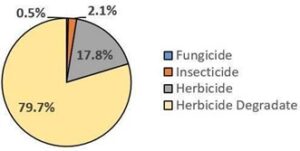
Figure 2. Frequency of pesticide detections by type.
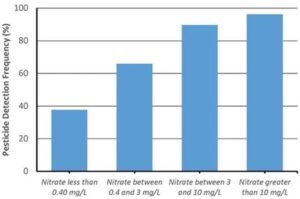
Figure 3. The pesticide detection frequency as it relates to nitrate concentration.
The concentration of pesticides in private wells have tended to be low in comparison to health reference values; however, there have been some exceedances of health reference values, particularly for total cyanazine in 2019, when the cyanazine degradates were added to the analytical list. Approximately 3% of the 1,103 wells sampled in 2019 indicated total cyanazine concentrations above the Minnesota HRL of 1,000 ng/L for total cyanazine. Cyanazine is an herbicide that was mainly used on corn crops in Minnesota from the early 1970s through the 1990s. Cyanazine use stopped in 2002 when the registration of this pesticide was voluntarily cancelled. The MDA plans to further evaluate the settings where detections of cyanazine degradates are likely to occur after the completion of the 2020 sampling season.
In an effort to provide homeowners with information about the use of in-home reverse osmosis (RO) water treatment systems for the removal of pesticides and nitrate, the MDA conducted a study to evaluate RO treatment system effectiveness. From 2017 through 2019, the MDA collected samples before and after RO system treatment from 44 private wells that were known to contain pesticides and nitrate. The results indicated RO home treatment systems removed 99.7% of pesticides that were evaluated, including 100% of the cyanazine degradates. The RO systems also reduced nitrate concentration levels below the HRL in all the wells evaluated. A summary of these findings is provided in Figure 4.

Figure 4. Average total pesticide and nitrate concentration reduction in tested reverse osmosis systems.
In Minnesota, private well owners are responsible for regularly testing their well water. The TTP and PWPS Project help to provide information to homeowners and the general public about the presence of nitrate and pesticides in private drinking water wells in areas of Minnesota that are most vulnerable to agricultural activities. Funding for both programs is provided primarily by the Minnesota Clean Water Land and Legacy Amendment, which is a constitutional amendment passed by Minnesota voters in 2008 that increased the state sales tax by three-eighths of one percent.
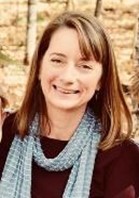
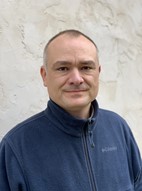
Kimberly Kaiser & Brennon Schaefer
Including Uncertainty with Doppler-Radar Estimates
Valmir Bucaja1, Tyson Walshb, Michael Sciolettic, Theodore Hromadka IId
a,b,c,dDepartment of Mathematical Sciences, United States Military Academy, West Point, NY, USA
Due to the article assets and necessary formulas, we have linked the entirety of this article in a PDF format here.
2020 AIH Award Winners
Founders Award for Institute Development: Greg Bevenger
Greg has devoted countless hours serving AIH, and he was nominated for this award for his exemplary service as AIH Treasurer from 2016 to 2019. His perseverance and diligence had a central role in putting AIH on a sustainable financial path, during a time that AIH was challenged with changing management companies. We are indebted to Greg for his sustained service to AIH.
Robert G. Wetzel Award for Water Quality: Dr. Mohamed Hantush
Mohamed works as a Research Hydrologist with the U.S. Environmental Protection Agency. He has developed mathematical models for wetland hydrology, formulas to assess groundwater vulnerability, and groundbreaking genetic algorithms for sediment and nutrient Best Management Practices.
Ray K. Linsley Award for Contributions to Surface Water: Dr. David Ford
Through his long, distinguished career, Dr. Ford made numerous lasting contributions to the hydrologic sciences. Dr. Ford was an internationally recognized expert in hydrologic, hydraulic, and water resources engineering, planning, and management, and provided consulting services to local, state, and federal governmental agencies throughout the United States and internationally. Over the course of his 45-year career, he contributed both theoretical and practical advances in flood warning systems, real-time forecasting and decision-making, reservoir operations, flood risk assessment, river hydraulics, and flood system planning. Dr. David Ford passed away peacefully on December 13, 2020 following 16 months of treatment for acute myeloid leukemia.
In Memoriam: Hans Olaf Pfannkuch (1932 -2020)
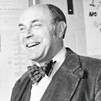

Former AIH member professor Hans Olaf Pfannkuch died on November 19, 2020, five days short of his 88th birthday. He is survived by his daughters Karin and Barbara, son Johannes, and their families.
Olaf was born in Berlin in 1932 during the rise of Nazi Epoch in Germany, which shaped his world view. He told many stories of his family’s resistance to Nazi Rule. He studied at the Aachen College in Germany and then in Paris University, graduating in 1962 with a Doctorate degree in Mining Engineering. In 1966, he began his career in Champaign-Urbana followed by the University of Minnesota in 1968, where he worked for 42 years. Olaf was an outstanding scientist who cared deeply about the educational mission of the University and did all he could to train and mentor generations of students in both fundamental and applied aspects of hydrogeology – with an emphasis on preserving and protecting Minnesota’s waters. He was always a strong advocate of raising hydrogeologic knowledge from the descriptive to the quantitative level.
Olaf was actively involved in international activities in Europe, Africa, and Russia, and a member of the Organizing Committee for the first US-USSR Conference on Environmental Hydrology and Hydrogeology. Held in 1990, it took place in Leningrad, Russia and was organized by the American Institute of Hydrology.
He was truly a renaissance man with intellectual curiosity in science, philosophy, music, art, international relations, and history. He internalized the thesis of the first great Confucian philosopher Xunzi (c. 260 BC) that “the nature of man is evil; his goodness is only acquired by training”. While there are many examples of his scientific curiosity, he was among the first who recognized that sustainability of water resources can be addressed only by “system science” rather than by “business as usual” analytic approaches. This was based on a fundamental understanding of work by French philosopher and historian, Fernand Braudel.
He was a remarkable gentleman with fine qualities, among them kindness, humility, warmth and a wonderful sense of humor. His intellectual interests extended beyond profession. His memorable lectures about Santa Barbara Saints for miners and wines have had a lasting influence on those who knew him and, consequently, expanded their professional, cultural and international knowledge.
The hospitality and goodwill of both him and his wife, Georgette, are memorable to his students, colleagues and friends. Their home was always filled with warmth, stimulating conversation, excellent food and great wines. He loved to travel and dine and reveled in the realization that his research and teaching activities took him to diverse international destinations.
He will be remembered by many colleagues and friends in the United States and overseas.
Roman Kanivetsky, P.H., Ph.D.
Co-Founder of AIH
